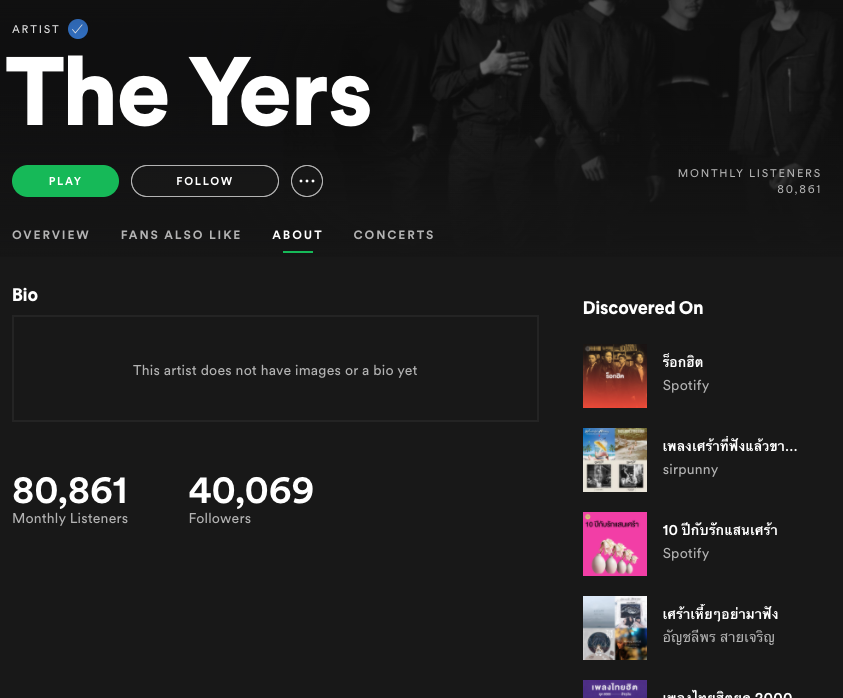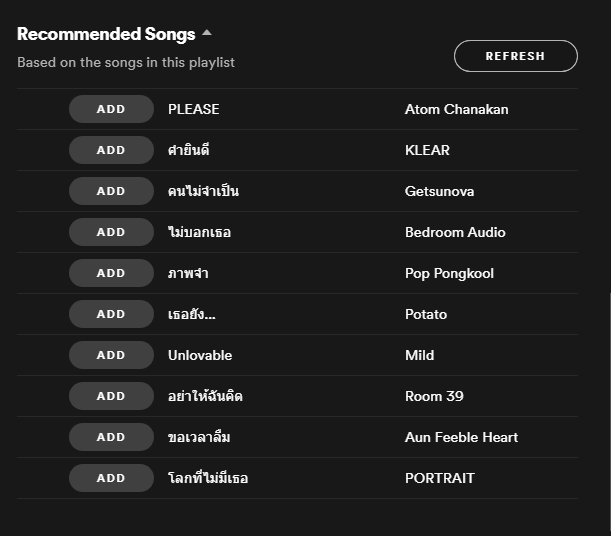How Spotify asks listeners to hack its algorithm
I listen to a lot of music and one of the things I noticed over the years is that I got stuck in a rut. Listening to the same things over and over again and not really picking up anything new. A problem with algorithmic recommendations, of music, or anything really, is that they can trap you with more and more specificity, narrowing around your interests instead of broadening horizons.
This narrowing has become even more difficult to escape now that my entire music experience is filtered through a streaming service, there’s no longer any time to trip over a song on the radio or even stumble over a recommendation on a pirating site. Even if someone was going to lend me a CD, I don’t have anything to play it anymore. Taking a single recommendation often isn’t enough to break out of the effect of my overall listening pattern. If I do nothing but passively consume music via a streaming service, I’ll likely never be pushed to the edge, much less out, of my comfort zone.
This problem isn’t just one of music recommendations. Only, I think there’s a solution that leverages the algorithmic recommendation process to broaden, instead of limit, us and we can see it already in Spotify.
The Sweet Escape
A brief guide to breaking your way out of your musical comfort zone.
Leveraging Organic encounters
In the world of the web, the term “organic” is used for a piece of content we find through actively searching for it, when it comes to music there is a similar process. I’m always fast on the Shazam trigger if I hear a song I like in a restaurant, movie or film. In the days I went outside (because we weren’t in a pandemic) I’d find a lot of very different songs that way. I also like Sofar Sounds concerts, I go in not knowing what music I’m going to get and potentially find something very different to enjoy.
Once I get a song I like, that doesn’t really sound like anything else to which I listen, the first thing I do is head to the artist’s About page on Spotify. From there I can follow links to Discovered On, a set of playlists that include the artist. While one song isn’t enough to escape the reinforcement of listening to the same music on loop, a whole new playlist of similar music starts to open things up.
A good example is the time I stumbled across Los Ángeles Azules’ “Amor A Primera Vista” in a restaurant. Their About page led me to a Spotify-created playlist around Cumbia Sonidera and checking through their Fans Also Like page let me dive into some similar bands.
Stealing from Friends
As you dig into these different playlists, you’ll find that listening impacts your Discovery playlist, which uses similar algorithmic tools to generate suggestions. If you go wild in your journeys outside your comfort zone you may find it becomes a little less useful.

I’m pretty sure I’ve broken my Discover playlist because it seems to often be filled with stuff I don’t particularly like. One time it was filled with bitcoin rap about “lambos”, which was the worst. If I’m looking for an antidote, but with nothing particular in mind, I also look for new music by finding other people’s Discovery playlists in the Friend Activity feed. Now I have a folder entirely composed of other people’s Discovery playlists. It’s great because some of my friends have better and sometimes very different musical tastes than I. Hopping into a friend’s Discover playlist is a lot of fun, as it puts you outside your comfort zone, and is also a great exercise in listening to entirely different kinds of music.
Occasionally there will be something great in my Discovery playlist, even now, so you can make mine the first you explore.
This just scratches the surface of how you can dig into the algorithm for more musical variety.
Using the Relationship Graph
Every Noise at Once is an algorithmic attempt to categorize music by genre and then place those genres and the bands that play them in relationship to each other. The project emerged from trying to understand what a musical genre even is and how one could even recommend songs on that basis and is part of a system that was purchased by Spotify to help run the recommendation system you encounter in their app today.
Here’s what the ENaO graph looks like for Classic Rock, one example of a genre I frequency listen to:
In the description of how this algorithmic sorting came to be engineer Glenn McDonald notes:
The approach allows us (or our customers) to seed, and then organically grow, a new genre or style from essentially any inspiration. In a couple peculiar cases, we’ve gathered an initial artist list, let the computers give us some songs, and only then listened to those songs to find out what kind of music we were even talking about.
By creating a system which can organically enter into a genre and essentially reverse engineer it, Spotify has a tool that lets me easily break out of any musical bubble and find my way–wikipedia-effect-style–into entirely new universes of music.
ENaO brings forth the ability to see the relationship graph of a genre. Here’s Classic Rock’s closely related genres (based on how listeners act, not on any historical reasoning).
Now if I want to make a small move, say I want to still get some of the sound of classic rock but move away from the core music of the genre I might choose to move towards psychedelic rock, traditional folk, or art rock. The position tells me a little about the genre in relation to Classic Rock: “down is more organic, up is more mechanical and electric; left is denser and more atmospheric, right is spikier and bouncier.” But ENaO gives me another option, the inverse graph:
Now, if I’m feeling like I really want to flip my listening on my head I can pick something totally opposite of my normal genre. Perhaps Fluxwork or some Montreal Indie?
From the Map area of ENaO I can expand the playlists I might explore based on a particular genre. The map shows a set of bands that I can try exploring individually. I can also head to one of the playlist links:
playlistsends me to “The Sounds of [Genre]” playlists on Spotify. When I stumble across an interesting genre I will often save the Sounds Of playlist for later when I’m in the mood to explore it a bit deeper. As a result I have a whole bunch of these playlists which essentially act as up-to-date overviews to the genre I can dive into at any time.introis essentially an ‘introduction’ to this genre with music that represents the core sound and is most popular among listeners of the genre.pulseis an interesting look at which songs listeners of this genre currently prefer.edgeis a fun one that shows you songs that people who like this genre currently enjoy outside the genre itself. It’s another great tool for pulling yourself out of a listening rut.
I might go to one or all of those playlists depending on how curious I am in order to find new music and save it to my liked songs.
Don’t Stop the Music
Once I find a song or genre I like, of course not every related song is my cup of tea, in the same way I like some classic rock bands, but not others. This is the part where I can “hack” the algorithm to help me develop an ear for a particular genre without knowing much about it. This is especially useful for me when I, an English-speaker, explore non-English genres. Here’s how it works:
My neighborhood Vietnamese restaurant plays really great Thai music. Of course, I didn’t know what type of music it was or even what language it was in when I first heard it, I had to Shazam it. The nature of exploring music this way is sort of naive so please excuse any factual errors to follow. Over the course of one dinner I had a few songs that I could explore. “โคตรเลวในดวงใจ” by Takkatan Chollada is classified as Thai pop country. “เสียเวลาว่ะ” by electric.neon.lamp is in Thai pop indie playlists while “เสพติดความเจ็บปวด” by The Yers appears to be Thai pop rock. These are assumptions I make by looking at the Discovered On playlists and translating the names.

Judging on these three songs it looks like I would enjoy Thai Pop music. Now I can throw these songs together into a playlist. When I create a Spotify playlist around songs from a new genre, it only takes a few entries before I can scroll to the bottom and use the Recommended Songs area.

By hopping into that section and listening further for what I enjoy, I can pretty quickly develop a playlist of my favorite parts of this genre I’m newly exploring, without knowing a lot except the particular sound that appeals to me.
This is sort of similar to the framework of Pandora, but is far more interesting because your seeding of the playlist can be a lot more focused and the way Spotify handles it gives you more transparency and control.
Getting a Taste
Once I do this for long enough, I start to develop a better ear for the subtleties of a specific genre. I may not have the tools of a music academic, so excuse my lack of proper terminology, but I will start to hear particular sounds or auditory themes that I groove to. I start by adding those into the playlist, but when I can start to differentiate the sub-genres by ear there comes a time to subdivide.
When I started, I saw all three of those songs above as “Thai Pop”, but by looking at what playlists they are in and listening to them and any of the recommended songs I enjoy, I start to get a sense of what differentiates them.
I’ll act on my new understanding of those differences by splitting the playlist into the three genres of Thai music that I perceive. Thai Pop, Thai Rock, and Luk thung (please excuse my ignorance as there is not a lot easily translatable or in English about most non-English music genres, but a rough description of this genre–as I understand it–is Thai Folk Country music. I highly recommend the Luk thung Wikipedia article).
Every Day I’m Shuffling
The key to this process is the Recommended Songs list at the end of every playlist. It’s a particularly fascinating piece of the user interface for Spotify. The section represents a radically different way of interacting with a recommendation algorithm, one that differs from other social platforms. It is the difference between being directed by the algorithm as a subject vs you directing the algorithm as a tool.
McDonald (still a few years from his employer being acquired by Spotify and this Recommendation mechanic becoming part of the app) states the core approach that creates this difference:
The point of the map, as with the genres, is not to resolve disputes but to invite you to explore music. It is an attempt – however uneven, idiosyncratic, and incomplete – to embrace this new state of the world, in which nearly all of humanity’s recorded music is streamable or downloadable, and give you a way to find out what you don’t know you don’t know.
All it takes is a few small changes in the user experience to make an algorithm that is a tool for exploration, expanding your view instead of narrowing it. I’m not saying that Spotify or this approach is perfect, but it is worlds different from using an algorithmically sorted platform like Facebook or Twitter because, with the exception of a few auto-generated playlists, Spotify has made the choice to give users the tools to “hack” the algorithm to explore new things, instead of trapping them in an ever narrowing funnel from the initial preferences they had when they started.
Editor’s Note - Podcasts
It’s worth noting that I wrote this before a well-earned explosion of controversy around Spotify royalty rates and podcasts. The podcasts question is especially interesting because all this awesome stuff that works well with music doesn’t work at all for podcasts (podcast recommendations seem to be a mystery in comparison). It’s a whole other essay, but I wonder if part of the problem is trying to run a whole new type of content without any of the tools that make Spotify, as an experience for music fans, work.
You should read more about what’s going on here:
- Spotify to let artists promote music for cut in royalty rates
- ‘The Joe Rogan Experience,’ a podcast that has sparked outrage, is a huge hit for Spotify
- Joe Rogan, Alex Jones and Spotify’s illusion of neutrality
- Spotify Is Defending Alex Jones’ Appearance On “The Joe Rogan Experience”
- ‘Justice At Spotify’ Campaign Calls for Increased Royalty Rates, More Transparency
- Spotify hints at subscription podcast service
- The Problem with Muzak
This post is specifically my own thoughts & not representative of my employers past or present.
Let's talk about this post:
Tweet to me Tweets about @Chronotope's #PlaylistHacking
